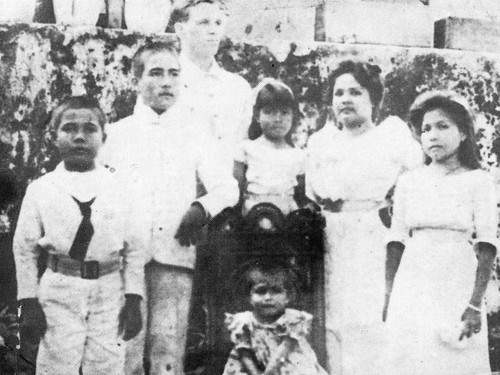Mestizo (Mestisu)
Mixed parentage
During Spanish colonial rule in the Marianas, the term mestizo (mestisu in CHamoru) referred to a person of mixed parentage. In its original context, as it was used in the Philippines, the term mestizo, denoted people who were of mixed Chinese and Spanish descent. By the mid-19th Century, however, the term mestizo (for males) or mestiza (for females) applied to any person of half-Spanish descent in the Spanish-ruled areas.
There was a negative connotation associated with the term mestizo, which later evolved to its contemporary acceptance as a term used to refer to people of mixed descent. Philippine Historian Domingo Abella wrote:
Pigmentation determined the status of Spanish mestizos in the Philippines. As long as they approximated the complexion of full-blooded Spaniards, they reminded several shades superior to the indios (indigenous). Repeated intermarriage with indios, however, eventually resulted in ‘indianization,’ rather than ‘hispanization.’ This process was both physical as well as legal. As evidence of Spanish blood progressively disappeared, so did the privileges that came with it. Those who had any trace of indio blood, however, could never become the social equals of the of the pure-bloods. Los limpios de sangro (the pure-bloods) always regarded them, along with the indios and the Chinese mestizos, as insulares.
Insulares was a term used to refer to Spaniards born in the Philippines or to Spanish-CHamoru mestizos born on Guam.
There are also, however, a number of official Spanish historic documents where the term mestizo appears to be used merely as a descriptive term for social matters, not as an ethnic category under the Spanish administrative apparatus.
Evolutionary acceptance
While initially the word mestizo denoted a person who was half-Spanish and half-CHamoru, it has evolved over the centuries. In its current use today on Guam, a mestisu or mestisa (CHamoru variations of the Spanish word mestizo) refers to any person of mixed ethnicity, but is usually associated with a person who is part-CHamoru and part-Caucasian.
References to person of such mixed heritage can be ethnic-specific, such as Mestisan CHamoru yan Tagalu (female CHamoru and Filipino), Mestison CHamoru yan Korean (male CHamoru and Korean) or Mestison CHamoru yan Amerikanu (male CHamoru and Caucasian), etc.
Traje de Mestisa
Another use for a variation of the term Mestisa is a traditional CHamoru dress for women, characterized by its high and elegant sleeves. The Mestisa was widely used in Marianas during special occasions until the 1970s. Today, this form of dress is still occasionally worn.
For further reading
Abella, Domingo. From Indio to Filipino: and some historical works. Manila: M. Romualdez-Abella, 1978.
Arenas, Rafael Diaz. Memorias Históricas y Estadísticas de Filipinas y Particularmente de la Grande Isla de Luzón. Manila: Imprenta del Diario de Manila, 1850.



